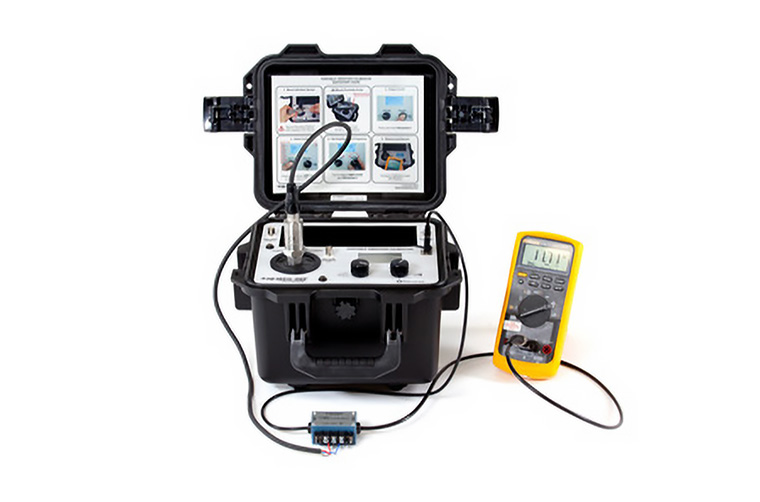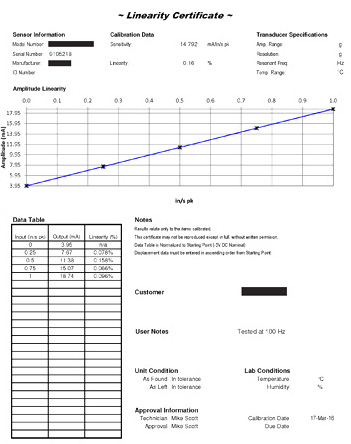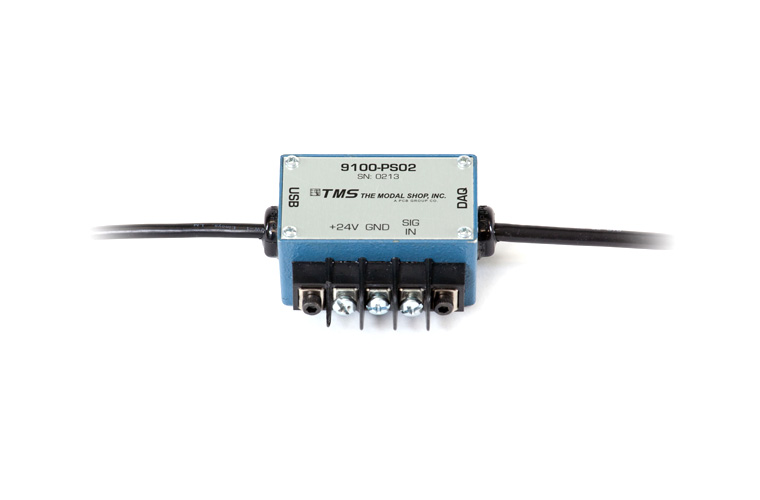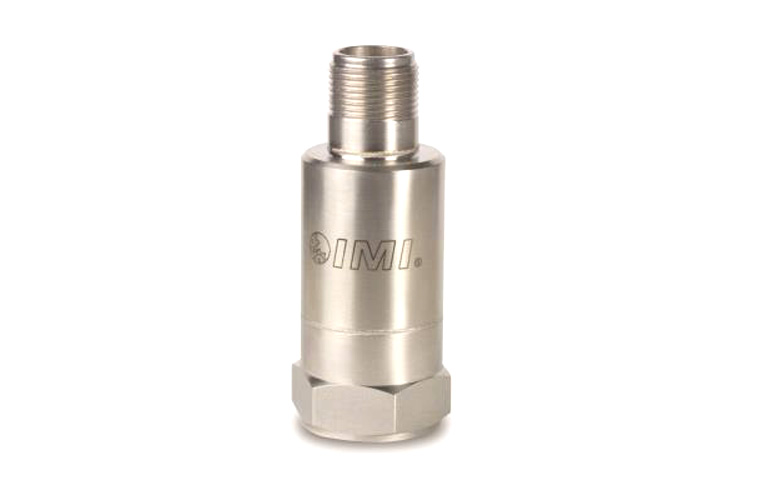Main Menu
- Home
- Product Finder
- Calibration Systems
- Calibration Services
- Digital Sensing
- Industrial Vibration Calibration
- Modal and Vibration Testing
- Non-Destructive Testing
- Sound & Vibration Rental Program
- Learn
- About Us
- Contact Us
 Instrumentation and Controls Technicians: When your critical pumps, motors, or compressors are protected with 4-20
mA vibration sensors, how can you be sure that those sensors are working properly? Vibration testing need not be more complicated than other types of testing that you perform every day. Do you use a hand pump to apply a known pressure to your 4-20
mA pressure sensors in the field? With The Modal Shop’s Portable Vibration Calibrator, you can easily perform similar tests for your 4-20 mA vibration sensors.
Instrumentation and Controls Technicians: When your critical pumps, motors, or compressors are protected with 4-20
mA vibration sensors, how can you be sure that those sensors are working properly? Vibration testing need not be more complicated than other types of testing that you perform every day. Do you use a hand pump to apply a known pressure to your 4-20
mA pressure sensors in the field? With The Modal Shop’s Portable Vibration Calibrator, you can easily perform similar tests for your 4-20 mA vibration sensors.
The PVC is a NIST-traceable shaker that displays the known vibration input to a sensor. Your task is simply to record the known vibration levels displayed on the PVC and make note of the signal output from the 4-20 mA sensor. With this data and tools provided with the PVC, you can easily determine the linearity of the sensor and create reports that can help your plant pass critical OSHA safety and insurance audits.
The following video demonstrates how to test an IMI Model 640B01 4-20 mA vibration transmitter using a Portable Vibration Calibrator from The Modal Shop.
Why test 4-20 mA loop-powered vibration transmitters? These sensors are rugged, but they can lose sensitivity over time. They may exhibit drift, failing to reach full-scale output. For example, when a velocity sensor whose maximum velocity is 1 in/s peak is driven to that maximum velocity, its output might have drifted from 20 mA to 18.7 mA, as shown in the certificate below:

If a sensor “fails” testing because it is not reaching full-scale output but is still exhibiting a linear response, the scaling in the PLC or DCS can be changed to adjust for this drift.
With The Modal Shop’s Portable Vibration Calibrator and the optional 9100-PS02 Power Supply, a 4-20 mA sensor can be tested in the field. If the sensor is working as expected, there will be a linear relationship between vibration and output current. Powering the sensor conveniently with a 9100-PS02 Power Supply plugged into the USB port on the Portable Vibration Calibrator, a known vibration can be applied by the PVC. The output of the sensor is read using a multimeter.
First, readings should be taken with no vibration. The vibration level should then be increased at a given frequency until vibration levels reach the top of the measurement range for the sensor under test. Output is often measured at 25%, 50%, and 75% of the span of the sensor under test to confirm linearity throughout the sensor’s range. The PVC Report Generation Workbook, included with the purchase of a Portable Vibration Calibrator, can be used to create a linearity certificate. Simply input the test data into the 4-20 mA Vibration Sensor table. If the response’s non-linearity is greater than 1% or if full scale output does not come within a certain percentage of what is specified (% of span), the sensor fails calibration.
For more technical details on the calibration of 4-20 mA loop vibration transmitters, see this article: Expanding Your Process Calibrator Capability.
4-20 mA loop-powered vibration transmitters are critical components in the safety of your system. With the Portable Vibration Calibrator, you can have confidence that they are calibrated and working properly.

 IMI Sensors: 640 Series 4-20 mA vibration transmitters and industry exclusive Smart Vibration Sensors such
as Reciprocating Machinery Protector
IMI Sensors: 640 Series 4-20 mA vibration transmitters and industry exclusive Smart Vibration Sensors such
as Reciprocating Machinery Protector